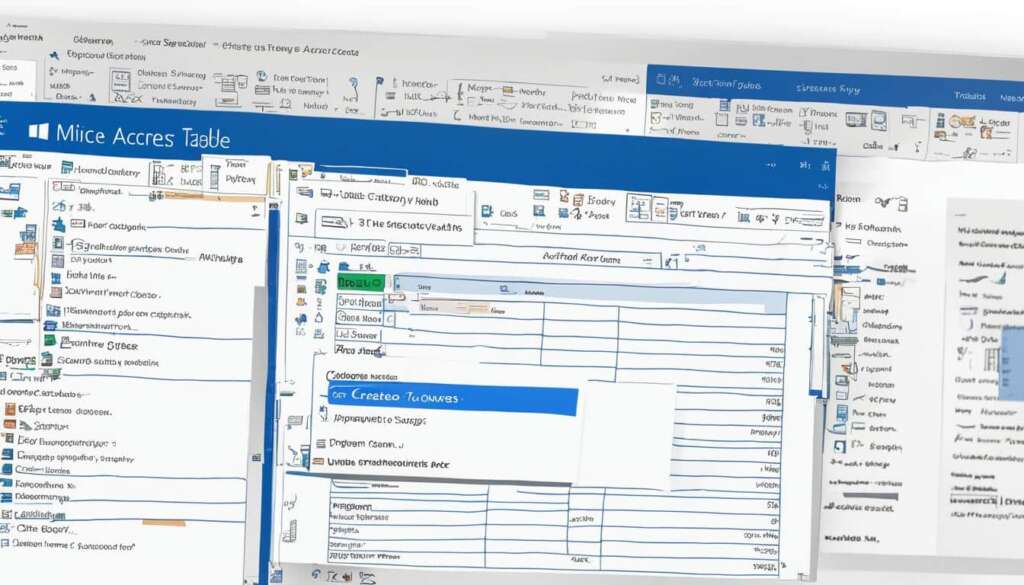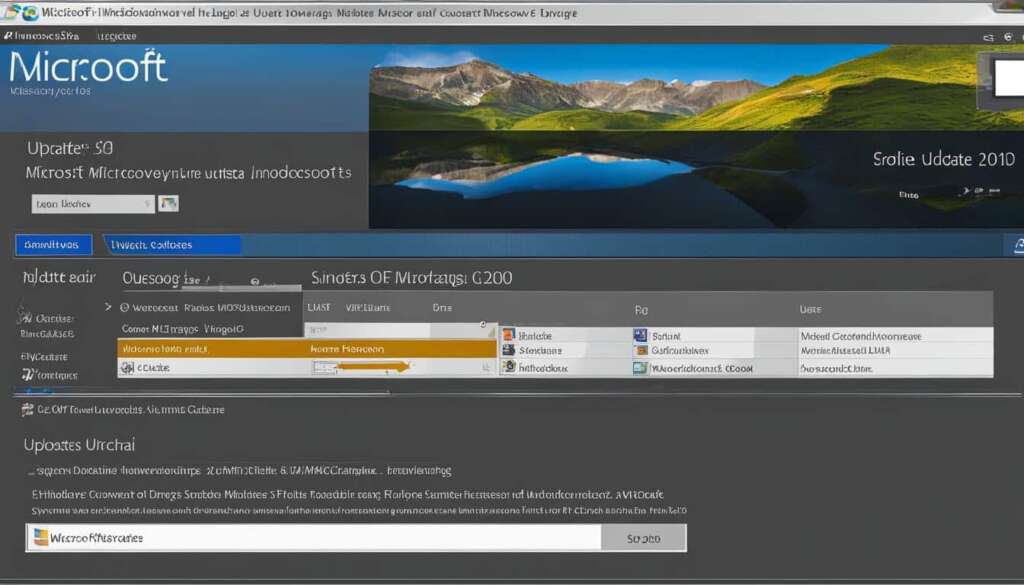Table of Contents
Microsoft Access is a powerful relational database management system that allows users to easily create, manage, and analyze data. In this complete guide, we will walk you through the process of using Microsoft Access, from choosing a template to organizing and analyzing your data. Whether you are a beginner or an experienced user, this guide will provide you with all the information you need to effectively utilize Microsoft Access for efficient data organization.
Are you looking to enhance your data organization skills? Look no further than this comprehensive Microsoft Access tutorial. In this guide, we’ll cover all the basics of how to use Microsoft Access and provide step-by-step instructions for tasks such as creating a database, adding tables, importing data, and performing advanced queries. Whether you’re a novice or an experienced user, this tutorial will help you unlock the full potential of Microsoft Access.
Getting Started with Microsoft Access
In order to effectively use Microsoft Access, the first step is to create a database. You have the option to either choose a template that suits your needs or start with a blank database. Once you have created the database, you can begin adding tables to store your data. Tables in Access are similar to spreadsheets, with rows and columns, allowing you to organize your information in a structured manner.
When adding tables, you can either enter data manually or copy and paste data from other sources such as Excel. This makes it easy to transfer existing data into your Access database without the need for manual input. Whether you prefer to enter data directly or utilize the copy and paste function, Microsoft Access provides a seamless process for data entry.
Tables in Microsoft Access offer a range of capabilities, allowing you to define field types, set relationships between tables, and establish primary and foreign keys. Additionally, you can create indexes to optimize data retrieval and sorting performance. Access gives you the flexibility to design tables that best suit your specific needs and requirements.
Tables in Access Example:
| Customer ID | First Name | Last Name | Phone Number | |
|---|---|---|---|---|
| 001 | John | Doe | johndoe@email.com | 123-456-7890 |
| 002 | Jane | Smith | janesmith@email.com | 987-654-3210 |
| 003 | David | Wilson | davidwilson@email.com | 555-555-5555 |
The example above illustrates a table in Microsoft Access that stores customer information. Each row represents a different customer, while each column represents a specific piece of information about the customer. This format allows for efficient organization and retrieval of data, making it easy to manage and analyze information within Access.
By creating a database, adding tables, and efficiently managing your data, you can harness the full potential of Microsoft Access for effective data organization and analysis.
Importing and Linking Data in Microsoft Access
In Microsoft Access, you have the option to import or link data from other sources. This functionality allows you to bring in data from various file formats and connect to external data sources seamlessly, expanding the scope and versatility of your Access database.
Importing data in Access:
Importing data involves bringing data from external sources directly into your Access database. This method is useful when you have data in different formats and want to consolidate it all in one place. Access supports importing data from popular formats such as Excel, CSV files, SharePoint lists, and more.
To import data in Access:
- Open your Access database.
- On the External Data tab, click on the Import & Link group.
- Select the type of file or data source you want to import from.
- Follow the prompts and provide any necessary information to complete the import process.
Linking data in Access:
Linking data allows you to connect to external data sources without moving the data into your Access database. This method is ideal when you need to work with data stored in other systems, such as SQL Server, Oracle, and DB2. By linking to these data sources, you can view and interact with the data in real-time, without duplicating it.
To link data in Access:
- Open your Access database.
- On the External Data tab, click on the Import & Link group.
- Select the type of data source you want to link to.
- Follow the prompts and provide the necessary connection details to establish the link.
Access provides flexibility in managing data from multiple sources, allowing you to leverage the power of your database while seamlessly integrating information from various data sources.
Here’s an example of how you can import data from an Excel file into your Access database:
| Step | Description |
|---|---|
| 1 | Open your Access database. |
| 2 | On the External Data tab, click on the Import & Link group. |
| 3 | Select “Excel” as the file type to import from. |
| 4 | Choose the Excel file you want to import and specify the import options. |
| 5 | Map the source columns to destination fields in the Access table. |
| 6 | Select any additional options, such as appending the data to an existing table. |
| 7 | Complete the import process by clicking “Finish”. |
Advanced Features in Microsoft Access
Microsoft Access is not just a basic database management system. It offers a range of advanced features that can enhance your data organization and analysis. One such feature is the ability to query data in Access. Queries allow you to extract specific information from your tables, apply filters, and even perform calculations to derive meaningful insights. Whether you want to retrieve a list of customers who made purchases in the last month or calculate the average sales by region, querying data in Access provides the flexibility and power you need.
Another valuable feature in Microsoft Access is the ability to create custom forms. Forms provide a user-friendly interface for entering and viewing data, making it easier for you and your team to interact with the database. You can design forms with various controls, such as text boxes, dropdown menus, and buttons, to ensure data entry is accurate and efficient. Forms also allow you to enforce data validation rules, ensuring the integrity of your database. By creating forms in Access, you can streamline data entry and improve overall usability.
When it comes to data analysis and reporting, Microsoft Access has got you covered. The software provides a robust reporting feature that enables you to generate professional-looking reports to summarize and present your data. You can customize the layout, include charts and graphs, and even add calculated fields to visualize your data effectively. Whether you need to create sales reports, inventory summaries, or performance dashboards, generating reports in Access offers a powerful toolset. With its intuitive interface and extensive options, you can create visually appealing reports that showcase your data in a clear and concise manner.
By leveraging the advanced features of Microsoft Access, such as querying data, creating forms, and generating reports, you can take your database management to the next level. Whether you are a business owner dealing with large amounts of data or a data analyst looking for efficient ways to analyze information, Microsoft Access provides the tools you need to make informed decisions and optimize your workflow.
FAQ
How do I create a database in Microsoft Access?
To create a database in Microsoft Access, you can either choose a template that suits your needs or start with a blank database. This allows you to customize your database according to your specific requirements.
What are tables in Microsoft Access?
In Microsoft Access, tables are similar to spreadsheets, with rows and columns. They allow you to store and organize your data in a structured manner. You can enter data manually or copy and paste data from other sources, such as Excel.
Can I import data from other sources into Microsoft Access?
Yes, Microsoft Access offers the option to import data from other sources. This allows you to bring data from Excel, CSV files, SharePoint lists, and more directly into your Access database. It simplifies the process of consolidating data from various sources into one central location.
What is the difference between importing and linking data in Microsoft Access?
Importing data in Access involves bringing data from external sources into your Access database. This creates a copy of the data within your database. On the other hand, linking data in Access allows you to connect to external data sources, such as SQL Server, Oracle, and DB2, without moving the data. This means that any changes made to the linked data source will be reflected in your Access database.
What advanced features does Microsoft Access offer for data management?
Microsoft Access provides advanced features to help you organize and analyze your data efficiently. You can use queries to filter, modify, or delete data in tables. Custom forms can be created to easily enter and view data in a more user-friendly way. Access also allows you to generate reports to summarize and present your data in a visually appealing format.













